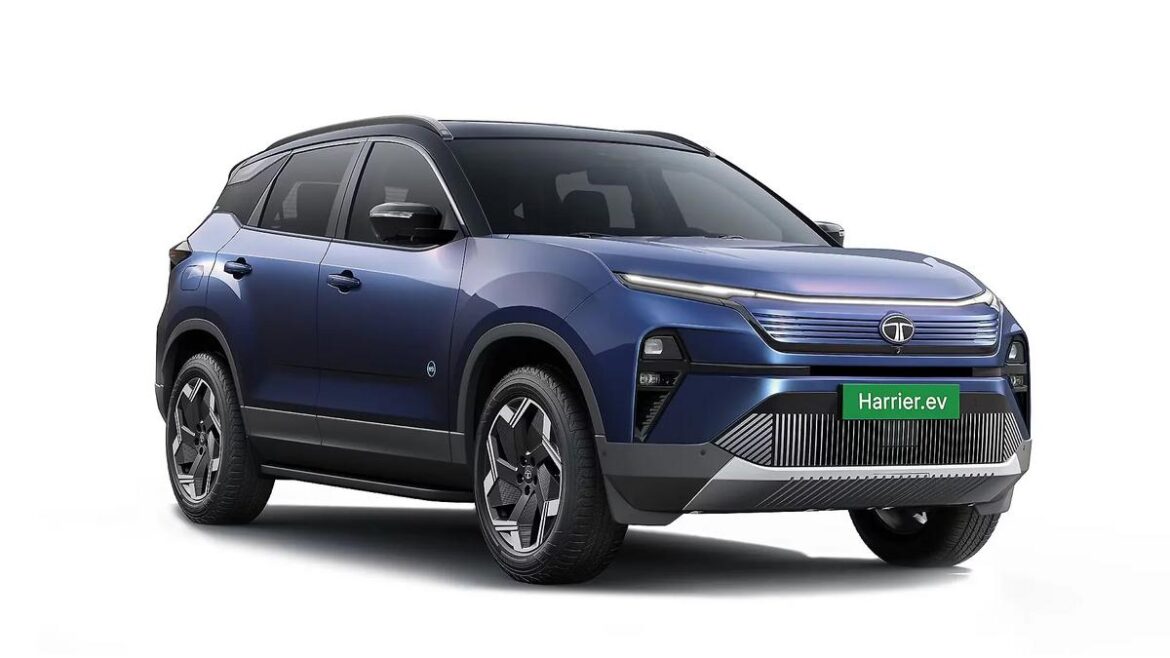Tata Motors has ignited the Indian electric vehicle market once again, this time with the all-new Harrier EV. In a stunning turn of events, the company received over 10,000 bookings in just 24 hours after opening reservations to the public. If you’re thinking that’s quick—well, you’re not alone.
Unprecedented Demand for the Harrier EV
It’s not every day that a newly launched vehicle reaches five-digit booking numbers within a single day. The interest isn’t just strong—it’s overwhelming. The Harrier EV, a fully electric version of Tata’s premium SUV, is drawing attention for its range, styling, and promise of advanced tech. It’s fast becoming one of the most talked-about EVs in India today.
Tata Motors announced on Wednesday that bookings for the Harrier EV had crossed 10,000 units in only 24 hours, setting a new internal record for the company. This comes right after its official unveiling, which had already created some serious buzz.
Official Statement
“The response to the Harrier EV has been beyond what we anticipated. Reaching 10,000 bookings within a day reflects the growing acceptance of electric vehicles in India and the trust consumers place in Tata Motors,” said a spokesperson from Tata Motors.
Timeline of Events
- May 4, 2024: Tata Motors teases the Harrier EV via a short social media campaign.
- May 6, 2024: Official unveiling with detailed specs, variant breakdown, and pre-booking announcement.
- May 7, 2024: Booking window opens, and within 24 hours, crosses 10,000 units.
- May 8, 2024: Tata confirms that production has already begun to meet the overwhelming demand.
Things are clearly moving fast. No delays or wait-and-see tactics here—Tata seems committed to getting these EVs on the road.
Why the Harrier EV Is Gaining Attention
If you’re wondering why this EV in particular is creating such waves, here are a few reasons:
- Range: The Harrier EV reportedly offers a driving range of around 550 km on a single charge.
- Design: Borrowing from the petrol-diesel versions but with distinctive electric styling cues.
- Technology-rich cabin: Includes advanced safety features, an intuitive infotainment system, and wireless charging.
- All-wheel drive availability: An option not typically seen in mainstream Indian EVs.
The company hasn’t yet released full pricing details, but early teasers suggest competitive positioning. Industry insiders estimate the starting price to be near ₹30 lakh, aligning with other premium SUVs in India—but with the twist of electric convenience.
Community Response
Among car enthusiasts and prospective buyers on social media and forums, there’s a mix of amazement and cautious optimism. Some are thrilled that a homegrown automaker is making serious headway into the EV market at scale. Others, honestly, are a bit skeptical—concerned about battery performance, service networks, and charging infrastructure.
One Twitter user summed it up aptly: “Love to see Tata pushing forward with EVs, but can we talk about where we’re going to charge them outside metro cities?”
Still, with Tata Power rapidly expanding its EV charging network across India—over 4,300 public chargers now—the landscape might be more ready than some think.
Production Already Underway
Responding swiftly to this surge in interest, Tata Motors has already begun production at its Pune plant. The fast response highlights Tata’s readiness and perhaps even its confidence in how this launch would go.
The company also hinted at initial deliveries starting as early as Q3 2024, with priority planned for early bookers. That said, depending on how the bookings continue, you might be waiting a bit if you didn’t already jump on the bandwagon.
What Could Affect Delivery Timelines?
Several factors will influence how quickly Tata can hand over keys to happy customers:
- Supply chain constraints – global battery availability remains tight.
- Dealer readiness in smaller towns and cities.
- Post-production road testing and final quality checks.
The bright spot? Tata has experience. With previous EVs like the Nexon EV and Tiago EV in circulation, much of the required infrastructure is already in place.
What’s Next?
Automotive insiders are watching closely to see whether other Indian automakers respond with similar high-spec EVs. With Mahindra, Hyundai, and MG already in the space—and newcomers like BYD testing the waters—it’s likely we’ll see a more crowded segment soon.
For Tata though, this is a milestone that sets a clear statement: the future is electric, and customers are ready—maybe even eager—to make the leap.
If the company maintains production momentum and ensures aftersales support, the Harrier EV could well become a benchmark for locally-manufactured EVs in India.
Final Thoughts
The pace of EV adoption in India has been gradually accelerating, but a launch like the Harrier EV—massive bookings, sleek design, and bold performance claims—just changes the dynamic. For consumers sitting on the fence about electrification, this might be the nudge they didn’t know they were waiting for.
And while the road to widespread EV adoption still has its bumps, today’s news makes it clear that plenty of drivers are ready to take that road.

